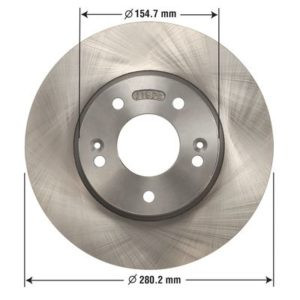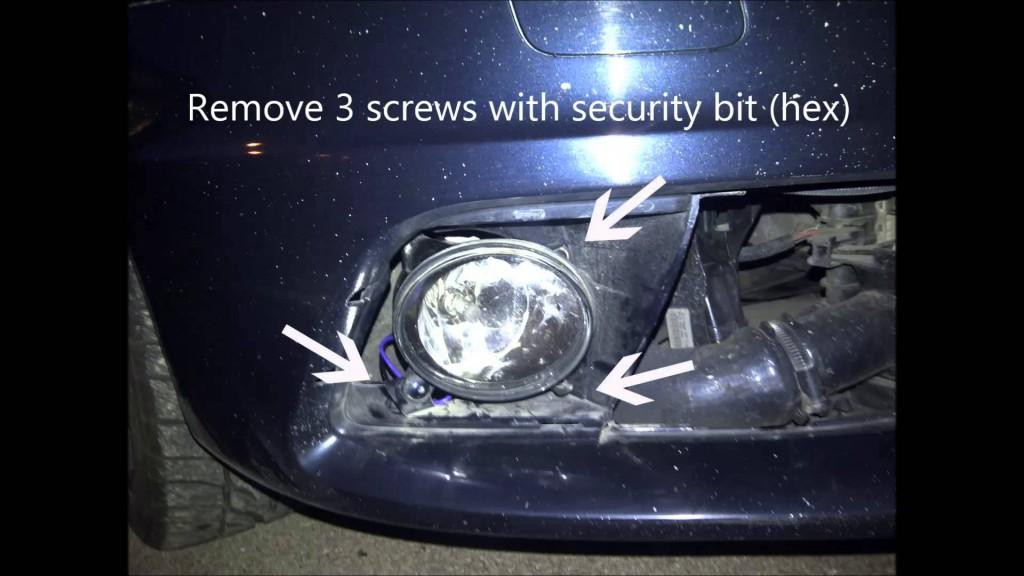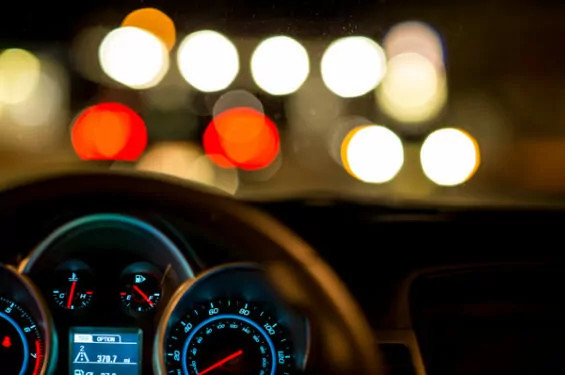How Long Does It Take to Get a Car Fixed?

How Long Does It Take To Get A Car Fixed? Understanding repair timelines is crucial, and CARDIAGTECH.NET is here to provide clarity. We offer insights into factors affecting repair duration and empower you with the knowledge needed for informed decisions. Discover efficient auto repair solutions and explore high-quality automotive tools that can expedite the process, ensuring you’re back on the road safely and swiftly. Let’s delve into repair timeframes, component availability, and repair center workloads.
1. Decoding Car Repair Timelines: An In-Depth Guide
Navigating the world of car repairs can be daunting, particularly when estimating the time required to get your vehicle back in top shape. The duration hinges on a myriad of factors, ranging from the extent of the damage to the availability of parts and the repair shop’s workload. Let’s break down the key elements that influence repair timelines, helping you anticipate the process and minimize disruptions.
- Severity of Damage: Minor issues like scratches or dents typically require less time, sometimes only a few hours. Major collision repairs involving structural damage or extensive component replacement can extend the timeline to several weeks.
- Availability of Parts: Common parts are usually readily available, while specialized or rare components can lead to delays as they need to be ordered and shipped.
- Vehicle Type: Luxury and high-performance vehicles often require specialized parts and expertise, potentially increasing repair times compared to standard models.
- Insurance Involvement: Insurance claims can add time to the process, as approvals and negotiations may be necessary before repairs can commence.
- Repair Shop Workload: The repair shop’s current workload can also affect turnaround time, with busier shops potentially experiencing longer delays.
Understanding these variables will enable you to better anticipate the repair timeline and make informed decisions.
2. Minor Collision Repairs: What to Expect
Minor collision repairs encompass a range of cosmetic and superficial issues that do not affect the structural integrity or mechanical functionality of the vehicle. These repairs typically involve addressing small dents, scratches, minor bumper damage, and other aesthetic imperfections. Due to their limited scope and complexity, minor collision repairs usually require less time and resources than more extensive repairs.
| Type of Minor Repair | Description | Average Time to Fix |
|---|---|---|
| Small Dent Removal | Repairing minor dents caused by shopping carts, hail, or other minor impacts. | 1-2 days |
| Scratch Repair | Removing scratches from the paint surface, often caused by keys, branches, or road debris. | 1-2 days |
| Minor Bumper Repair | Fixing small cracks, scuffs, or dents on the bumper. | 1-3 days |
| Paint Touch-Up | Applying paint to small areas to cover chips, scratches, or imperfections. | 1 day |
| Side Mirror Replacement | Replacing a damaged or broken side mirror. | 1 day |
| Headlight/Taillight Repair | Repairing or replacing damaged headlight or taillight lenses or bulbs. | 1 day |
 Car with a dent from a shopping cart, illustrating minor collision damage
Car with a dent from a shopping cart, illustrating minor collision damage
Minor collision repairs are generally less labor-intensive and require fewer specialized tools and equipment compared to major repairs. With the right tools and parts, the actual work can often be completed in just a few hours, minimizing the disruption to your daily routine. However, factors such as the availability of matching paint, the complexity of dent removal, and the repair shop’s workload can influence the overall timeline.
3. Navigating Major Collision Repairs: A Comprehensive Overview
Major collision repairs address significant damage to a vehicle’s structural or mechanical components. These repairs often involve frame straightening, suspension work, airbag replacement, and extensive body panel repairs. Due to the complexity and specialized nature of these repairs, they typically require more time, expertise, and resources than minor collision repairs.
| Type of Major Repair | Description | Average Time to Fix |
|---|---|---|
| Frame Straightening | Correcting damage to the vehicle’s frame, ensuring structural integrity and proper alignment. | 4 days – 2 weeks |
| Suspension Repair | Repairing or replacing damaged suspension components, such as struts, shocks, and control arms. | 2-3 days |
| Airbag Replacement | Replacing deployed airbags and related sensors and modules. | 2-5 days |
| Extensive Body Panel Repair | Repairing or replacing damaged body panels, such as doors, fenders, and quarter panels. | 2-4 days |
| Engine Repair/Replacement | Repairing or replacing a damaged or malfunctioning engine. | 1-4 weeks |
| Transmission Repair/Replacement | Repairing or replacing a damaged or malfunctioning transmission. | 1-3 weeks |
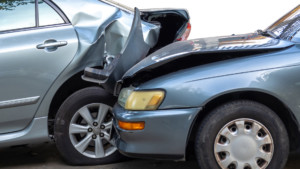 Car with rear end damage, including a crushed trunk and a damaged bumper, showing the impact of a major collision
Car with rear end damage, including a crushed trunk and a damaged bumper, showing the impact of a major collision
Major collision repairs often necessitate specialized tools and equipment, such as frame straightening machines, welding equipment, and diagnostic tools. The availability of replacement parts can also significantly impact the repair timeline, particularly for rare or specialized vehicles. Insurance claims and approvals can further extend the process, as adjusters may need to assess the damage and negotiate repair costs.
4. Understanding Severe Collision Damage and Extended Repair Times
Severe collision damage represents the most extensive and complex type of vehicle repairs, often involving significant structural compromise and extensive component replacement. These repairs typically arise from high-impact collisions, rollovers, or other catastrophic events that result in substantial damage to the vehicle’s frame, engine, suspension, and body. Due to the severity of the damage and the complexity of the repairs, these cases often require the longest repair times.
| Type of Severe Damage | Description | Average Time to Fix |
|---|---|---|
| Extensive Frame Damage | Major damage to the vehicle’s frame, requiring extensive straightening or replacement of structural components. | 2 weeks or longer |
| Major Engine Damage | Severe damage to the engine, requiring extensive repairs or complete engine replacement. | 3-4 weeks |
| Significant Suspension Damage | Extensive damage to the suspension system, including multiple components such as struts, shocks, control arms, and axles. | 1-2 weeks |
| Complete Body Reconstruction | Extensive damage to multiple body panels, requiring complete reconstruction of the vehicle’s exterior. | 4-8 weeks or longer |
| Fire or Flood Damage | Damage caused by fire or flooding, often requiring extensive cleaning, restoration, and replacement of affected components. | 4-8 weeks or longer |
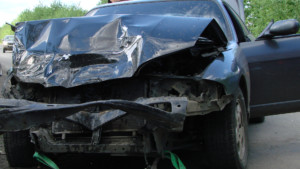 Car with severe frontend damage, including a crushed front end, crumpled hood, and broken windshield, illustrating a high-speed collision
Car with severe frontend damage, including a crushed front end, crumpled hood, and broken windshield, illustrating a high-speed collision
Severe collision repairs often involve a meticulous and labor-intensive process, requiring highly skilled technicians and specialized equipment. The availability of replacement parts can be a significant factor in the repair timeline, particularly for rare or discontinued vehicles. Insurance claims and approvals can further extend the process, as adjusters may need to conduct thorough inspections and negotiate repair costs.
5. Demystifying the Collision Repair Process: A Step-by-Step Guide
To better understand the timeline involved in collision repair, it’s helpful to break down the process into its individual stages. Each stage requires specific tasks and procedures, which contribute to the overall repair time. By understanding the sequence of events, you can gain a more realistic expectation of how long it will take to get your car back on the road.
- Assessment and Estimation: The initial stage involves a thorough inspection of the vehicle to assess the extent of damage and provide a detailed estimate of repair costs and timeline.
- Insurance Approval: If an insurance claim is involved, the estimate must be submitted to the insurance company for review and approval. This process may involve negotiations and additional inspections.
- Ordering and Receiving Parts: Once the estimate is approved, necessary replacement parts are ordered. The availability of parts can significantly impact the repair timeline, particularly for rare or specialized vehicles.
- Body Repair and Painting: This stage involves the actual repair work, including dent removal, panel replacement, frame straightening, and painting. The complexity of the repairs and the skill of the technicians will influence the duration of this stage.
- Reassembly and Quality Control: After the repairs are completed, the vehicle is reassembled, and a thorough quality control inspection is performed to ensure that all repairs meet the required standards and specifications.
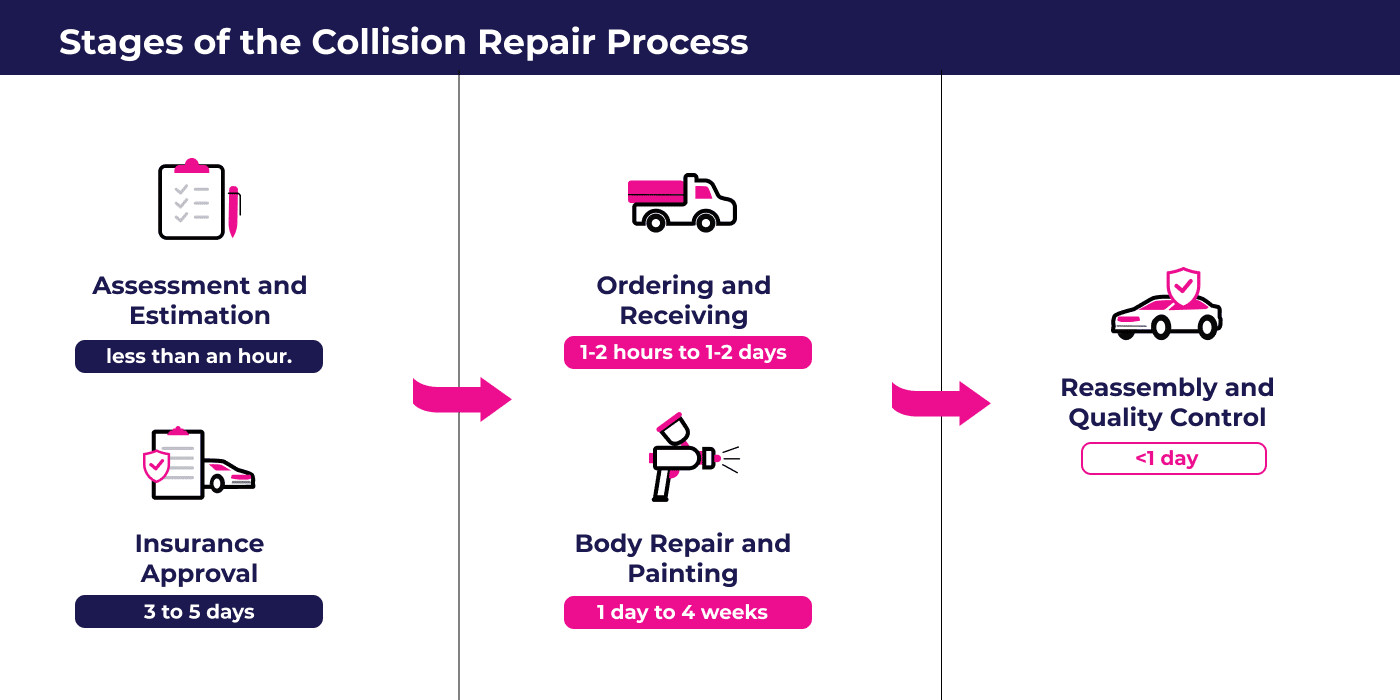 Stages of the Collision Repair Process, outlining the steps from assessment to completion
Stages of the Collision Repair Process, outlining the steps from assessment to completion
Each stage of the collision repair process contributes to the overall timeline. Understanding these stages can help you better anticipate potential delays and communicate effectively with the repair shop.
6. Factors Influencing Collision Repair Time: A Comprehensive Analysis
Several key factors can influence the duration of collision repair, affecting the overall time it takes to get your vehicle back on the road. These factors range from the severity of the damage to the availability of parts and the repair shop’s workload.
| Factor | Description | Impact on Repair Time |
|---|---|---|
| Severity of Damage | The extent of damage to the vehicle’s structure, body, and mechanical components. | Significant |
| Availability of Parts | The ease with which replacement parts can be sourced and obtained. | Significant |
| Type of Vehicle | The make, model, and year of the vehicle, which can affect the availability of parts and the complexity of repairs. | Moderate |
| Insurance Company Involvement | The process of filing and approving insurance claims, which can add time due to inspections, negotiations, and paperwork. | Moderate |
| Repair Shop Workload | The number of vehicles currently being repaired at the shop, which can affect the shop’s ability to allocate resources and complete repairs in a timely manner. | Moderate |
| Weather Conditions | Weather conditions such as extreme cold, heat or humidity can effect the drying and curing times of paint and adhesives, potentially delaying the process. | Slight |
 Factors Affecting Collision Repair Time, highlighting key elements such as damage severity and parts availability
Factors Affecting Collision Repair Time, highlighting key elements such as damage severity and parts availability
Understanding how these factors influence repair time can help you set realistic expectations and communicate effectively with your repair shop. Being aware of potential delays and proactively addressing any issues can help expedite the process.
7. OEM vs Aftermarket Parts: Impact on Repair Time and Quality
The choice between Original Equipment Manufacturer (OEM) parts and aftermarket parts can significantly influence repair time and the overall quality of the repair. OEM parts are manufactured by the original vehicle manufacturer and are designed to meet the exact specifications of the vehicle. Aftermarket parts are produced by third-party manufacturers and may vary in quality and fit.
| Part Type | Description | Impact on Repair Time | Quality Considerations |
|---|---|---|---|
| OEM Parts | Parts manufactured by the original vehicle manufacturer, designed to meet exact specifications. | Can be longer if on backorder | Generally considered higher quality, ensuring proper fit and performance. |
| Aftermarket Parts | Parts manufactured by third-party companies, often less expensive than OEM parts. | Typically faster to obtain | Quality can vary significantly; may not always fit perfectly or perform as well as OEM parts. |
Choosing between OEM and aftermarket parts can have a significant impact on the repair timeline and the long-term reliability of your vehicle. While aftermarket parts may offer a cost-saving alternative, it’s important to consider the potential impact on quality and fit.
8. The Role of Insurance Company Involvement in Collision Repair Timelines
Insurance company involvement plays a significant role in the collision repair process, often impacting the overall timeline. The process of filing a claim, obtaining approvals, and negotiating repair costs can add time to the repair process. Understanding the insurance company’s role and how to navigate the claims process can help minimize delays and ensure a smooth repair experience.
- Claim Filing: The first step is to file a claim with your insurance company, providing details about the accident and the damage to your vehicle.
- Damage Assessment: The insurance company will typically send an adjuster to inspect the damage and assess the repair costs.
- Estimate Approval: The repair shop will provide an estimate to the insurance company, which may need to be reviewed and approved by the adjuster.
- Negotiation: In some cases, the insurance company may negotiate the repair costs with the shop, which can add time to the process.
- Payment: Once the repairs are completed, the insurance company will issue payment to the repair shop, either directly or through you.
Navigating the insurance claims process can be complex and time-consuming. Working with a repair shop that has experience dealing with insurance companies can help streamline the process and minimize delays. CARDIAGTECH.NET works directly with claims adjusters and your insurance company, reducing delays and hassle. Contact us at +1 (641) 206-8880 for immediate assistance.
9. Repair Shop Workload: How It Affects Your Car’s Turnaround Time
The workload of a repair shop can significantly affect the time it takes to get your car fixed. A busy shop may have limited resources and technicians available, leading to delays in the repair process. Understanding how shop workload can impact turnaround time can help you make informed decisions and manage your expectations.
- Scheduling: A busy shop may have a longer waiting list for appointments and repairs.
- Resource Allocation: With limited resources, the shop may need to prioritize repairs based on severity or customer needs.
- Technician Availability: A high workload can strain technician availability, potentially delaying the completion of your repairs.
- Parts Ordering: A busy shop may experience delays in ordering and receiving parts due to increased demand.
- Communication: A high workload can impact communication between the shop and customers, potentially leading to misunderstandings or delays in updates.
Choosing a reputable collision repair shop is crucial because they provide quality work, fair pricing, and transparency without hidden fees.
10. How CARDIAGTECH.NET Can Help Expedite Your Car Repair Process
At CARDIAGTECH.NET, we understand that getting your car fixed quickly and efficiently is a top priority. That’s why we offer a range of products and services designed to expedite the repair process and minimize disruptions to your life.
- High-Quality Automotive Tools: Our extensive selection of high-quality automotive tools can help technicians perform repairs more efficiently and accurately.
- Diagnostic Equipment: Our advanced diagnostic equipment enables technicians to quickly identify and diagnose problems, reducing the time needed to troubleshoot issues.
- Parts Sourcing: We can assist in sourcing hard-to-find parts, minimizing delays caused by parts unavailability.
- Technical Support: Our team of experienced technicians can provide technical support and guidance to help repair shops resolve complex issues quickly.
- Training Programs: We offer training programs to help technicians enhance their skills and stay up-to-date with the latest repair techniques.
By partnering with CARDIAGTECH.NET, repair shops can improve their efficiency, reduce turnaround times, and provide customers with a seamless repair experience. Contact us at Whatsapp: +1 (641) 206-8880 to learn more about how our products and services can benefit your business.
11. The Impact of Vehicle Type on Auto Repair Duration
The make and model of your vehicle play a crucial role in determining how long it takes to complete auto repairs. Common vehicles with readily available parts tend to have shorter repair times compared to luxury or rare vehicles that require specialized components and expertise. Let’s explore how different vehicle types influence repair timelines:
| Vehicle Type | Parts Availability | Technician Expertise | Average Repair Time | Cost Implications |
|---|---|---|---|---|
| Common Vehicles | Readily available | Standard | Shorter | Lower |
| Luxury Vehicles | Limited | Specialized | Longer | Higher |
| Classic/Rare Vehicles | Very Limited | Highly Specialized | Significantly Longer | Significantly Higher |
- Common Vehicles: Vehicles like Toyota, Honda, Ford, and Chevrolet generally have readily available parts and technicians familiar with their repair procedures. This translates to shorter repair times and lower costs.
- Luxury Vehicles: Brands like Mercedes-Benz, BMW, Audi, Lexus, and Tesla often require specialized parts and technicians trained in handling their unique features and technologies. This can lead to longer repair times and higher costs.
- Classic/Rare Vehicles: Repairing classic or rare vehicles can be particularly challenging due to the scarcity of parts and the need for highly specialized technicians with expertise in vintage automotive systems. These repairs often take significantly longer and are more expensive.
12. Seasonal Variations in Auto Repair Turnaround Times
Auto repair shops often experience fluctuations in workload depending on the time of year. Understanding these seasonal trends can help you anticipate potential delays and plan your repairs accordingly.
| Season | Common Repair Types | Factors Contributing to Increased Workload | Potential Impact on Turnaround Time |
|---|---|---|---|
| Winter | Battery issues, tire replacements, collision repairs due to icy conditions | Cold weather causing battery drain, increased accidents due to slippery roads | Longer turnaround times due to higher demand |
| Spring | Suspension repairs, brake replacements, AC repairs | Potholes causing suspension damage, increased driving after winter | Moderate increase in turnaround times |
| Summer | AC repairs, overheating issues, tire replacements | High temperatures straining AC systems, increased road trips | Moderate increase in turnaround times |
| Fall | Brake repairs, tire replacements, fluid changes | Preparing vehicles for winter, increased driving during holidays | Moderate increase in turnaround times |
- Winter: Cold weather can cause batteries to fail, leading to increased demand for battery replacements. Icy conditions can also increase the risk of collisions, resulting in more body shop repairs.
- Spring: Potholes and rough roads can damage suspension systems, leading to more suspension repairs. Increased driving after winter can also lead to more brake replacements.
- Summer: High temperatures can strain AC systems, leading to more AC repairs. Increased road trips can also result in more tire replacements.
- Fall: Preparing vehicles for winter can lead to more brake repairs, tire replacements, and fluid changes. Increased driving during the holidays can also contribute to higher demand.
13. The Importance of Clear Communication with Your Auto Repair Shop
Maintaining open and clear communication with your auto repair shop is essential for a smooth and efficient repair process. Effective communication can help prevent misunderstandings, minimize delays, and ensure that you are fully informed about the progress of your repairs.
- Ask Questions: Don’t hesitate to ask questions about the repair process, the estimated timeline, and the costs involved.
- Provide Detailed Information: Provide as much information as possible about the problems you are experiencing with your vehicle.
- Stay in Touch: Check in with the repair shop regularly to get updates on the progress of your repairs.
- Be Responsive: Respond promptly to any questions or requests from the repair shop.
- Document Everything: Keep records of all communications, estimates, and invoices.
By actively engaging in clear and open communication with your auto repair shop, you can help ensure that your repairs are completed efficiently and to your satisfaction.
14. The Financial Implications of Extended Car Repair Times
Extended car repair times can have significant financial implications, beyond the cost of the repairs themselves. These costs can include:
- Rental Car Expenses: If your car is out of service for an extended period, you may need to rent a car to get around.
- Lost Wages: If you rely on your car to get to work, you may lose wages if your car is not available.
- Alternative Transportation Costs: You may need to pay for public transportation, taxis, or ride-sharing services.
- Inconvenience and Stress: The inconvenience and stress of being without your car can also have a financial impact.
Understanding these potential financial implications can help you plan and budget for extended car repair times.
15. Proactive Car Maintenance: Reducing the Likelihood of Lengthy Repairs
One of the best ways to minimize the risk of lengthy car repairs is to practice proactive car maintenance. Regular maintenance can help identify and address potential problems before they escalate into major issues.
- Follow the Recommended Maintenance Schedule: Consult your owner’s manual for the recommended maintenance schedule and follow it diligently.
- Check Fluids Regularly: Check your car’s fluids regularly, including oil, coolant, brake fluid, and power steering fluid.
- Inspect Tires: Inspect your tires regularly for wear and tear, and maintain proper tire pressure.
- Get Regular Tune-Ups: Get regular tune-ups to ensure that your engine is running smoothly.
- Address Minor Issues Promptly: Don’t ignore minor issues, such as leaks or unusual noises. Address them promptly to prevent them from becoming major problems.
By practicing proactive car maintenance, you can significantly reduce the likelihood of lengthy and costly repairs.
Average Collision Repair Time FAQs
1. What transportation options are available while my car is being repaired?
Transportation options vary depending on your insurance coverage and the repair shop’s policies. Some insurance policies cover rental cars, while some repair shops offer loaner vehicles or shuttle services.
2. Does CARDIAGTECH.NET offer a warranty on automotive repairs?
CARDIAGTECH.NET does not offer automotive repairs directly, but we stand behind the quality of our automotive tools and diagnostic equipment. We encourage you to ask your chosen repair shop about their warranty policy.
3. Is front-end collision repair typically faster or slower than rear-end collision repair?
Front-end repairs often take longer due to the complexity of components like the engine, radiator, and hood.
4. When is a car considered a total loss by insurance companies?
A car is typically considered a total loss when the repair costs exceed a certain percentage (often 70-75%) of the car’s market value.
5. What steps should I take if the repair time is significantly longer than initially estimated?
Communicate with the repair shop to understand the reasons for the delay. If necessary, contact your insurance company to explore alternative options.
6. What is the average cost of collision repair?
Collision repair costs vary widely depending on the extent of damage, vehicle type, and location. Contact a reputable repair shop for a free estimate.
7. Can weather conditions affect the duration of car repairs, especially painting?
Yes, weather conditions such as extreme cold, heat or humidity can effect the drying and curing times of paint and adhesives, potentially delaying the process.
8. How do supply chain issues impact car repair times, and what can be done about it?
Supply chain issues can delay the arrival of necessary parts, extending repair times. Clear communication with the repair shop can help manage expectations and explore alternative part options.
9. What role do advanced diagnostic tools play in speeding up the car repair process?
Advanced diagnostic tools help quickly identify issues, leading to faster and more accurate repairs, ultimately reducing the overall repair time.
10. How can using high-quality aftermarket parts, when appropriate, impact the duration and cost of repairs?
High-quality aftermarket parts can offer a cost-effective alternative to OEM parts, potentially speeding up repairs and reducing costs without compromising quality.
We understand that the time it takes to get a car fixed is a critical concern. That’s why CARDIAGTECH.NET is committed to providing you with the knowledge and resources you need to navigate the repair process efficiently. If you’re seeking to optimize your auto repair capabilities, contact us at 276 Reock St, City of Orange, NJ 07050, United States or Whatsapp: +1 (641) 206-8880. Our team of experts is ready to assist you. Let us help you streamline your operations and enhance your service offerings today. Visit CARDIAGTECH.NET now.



